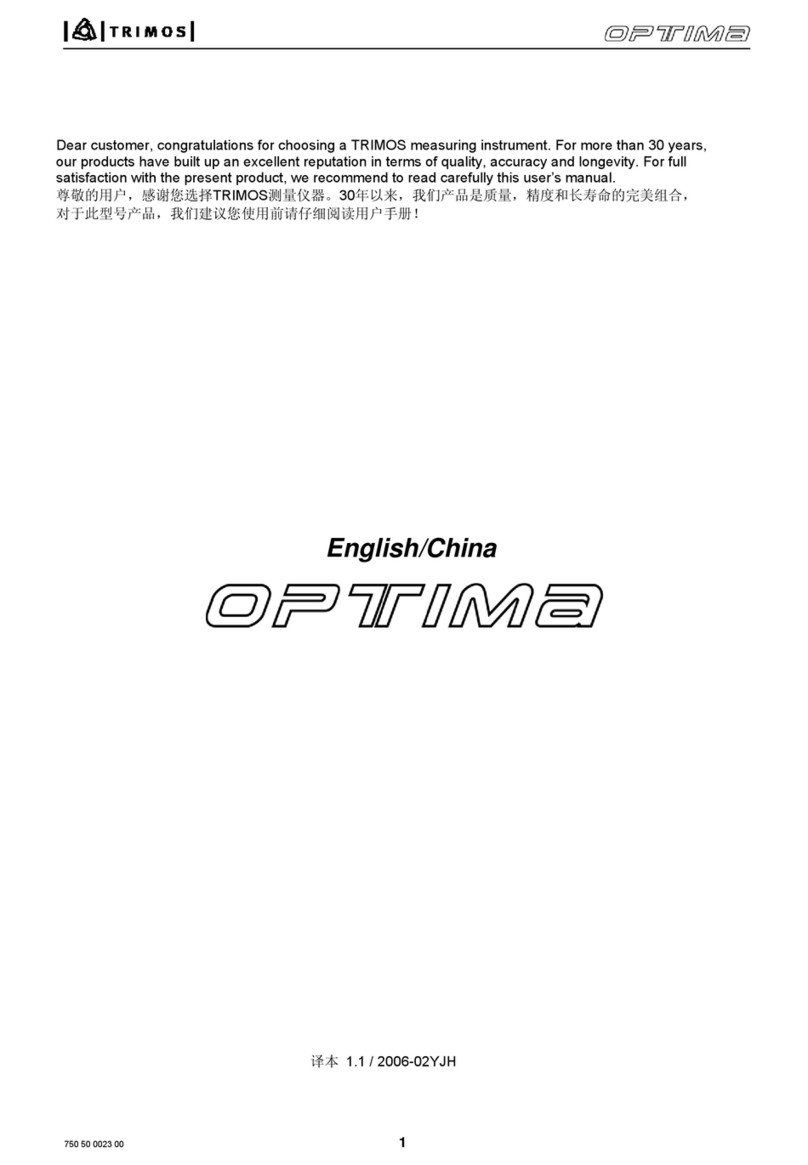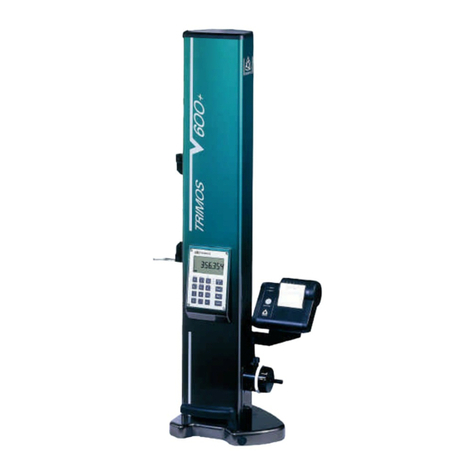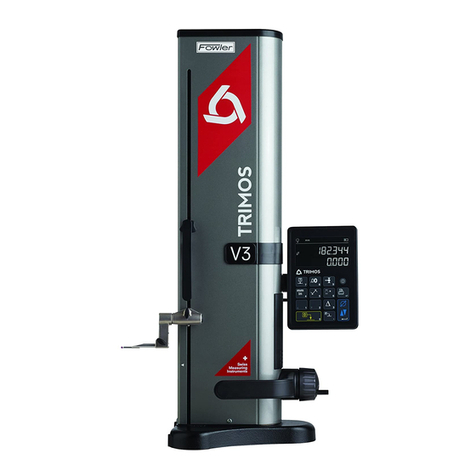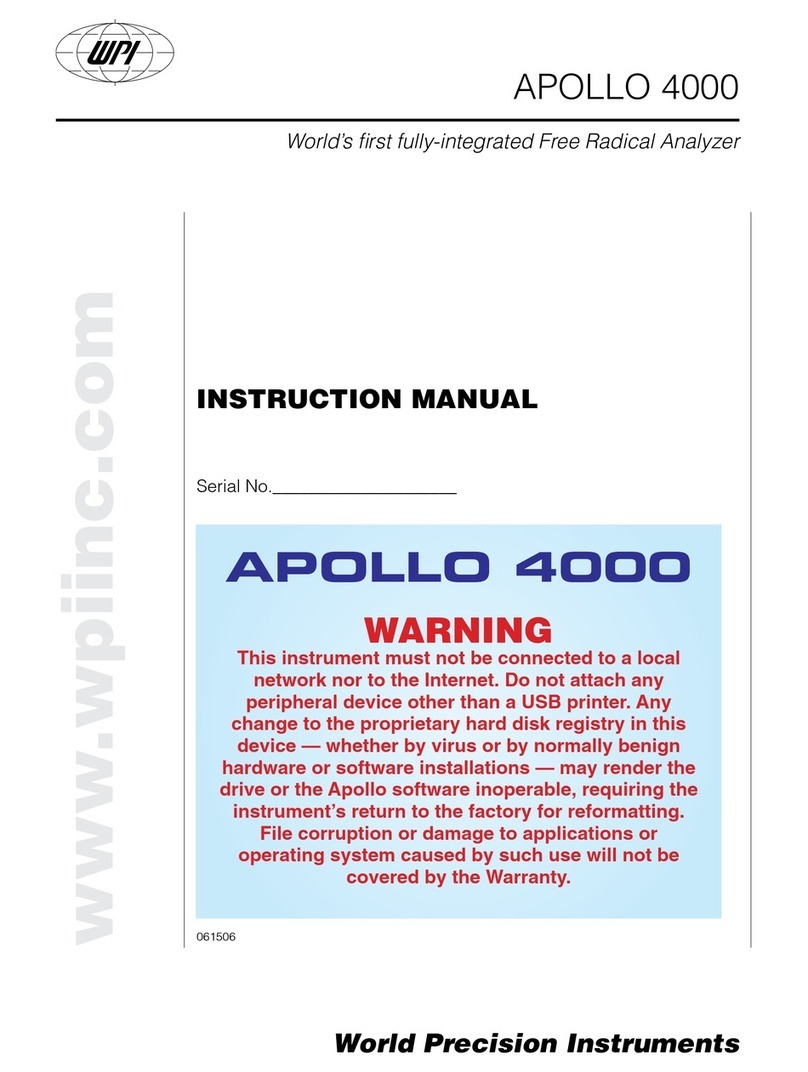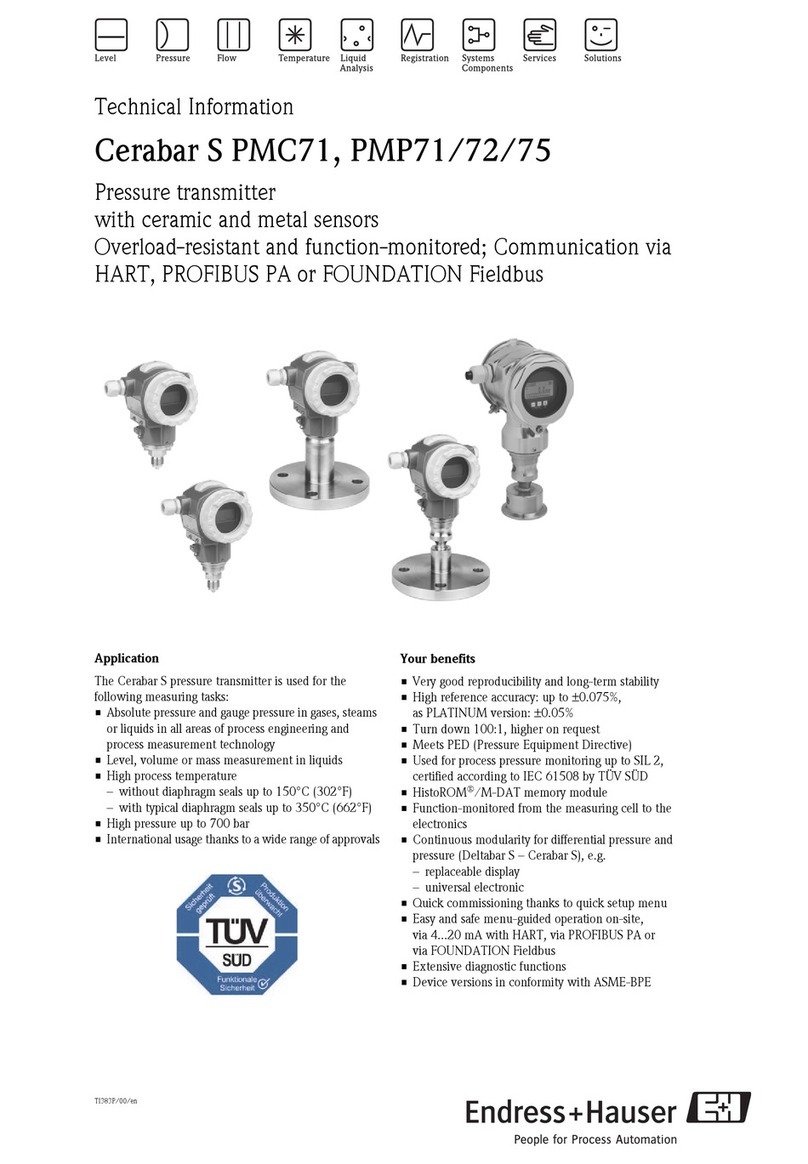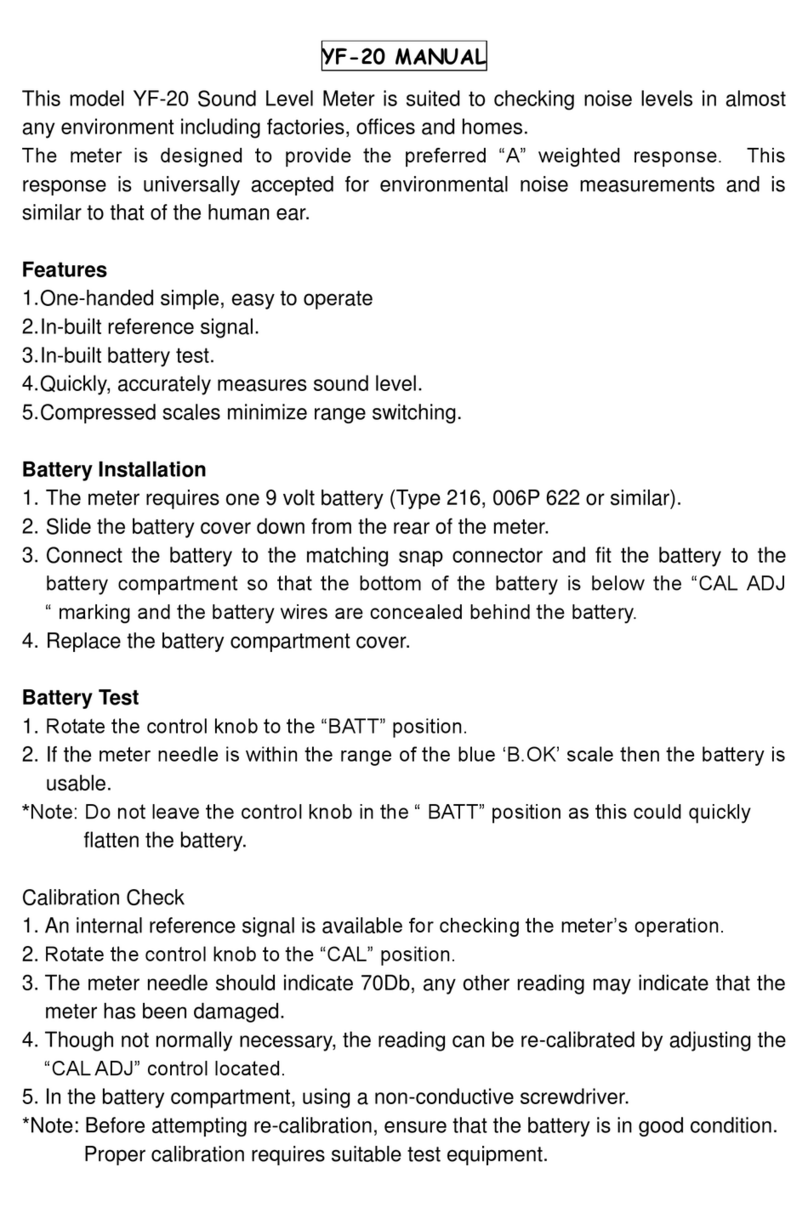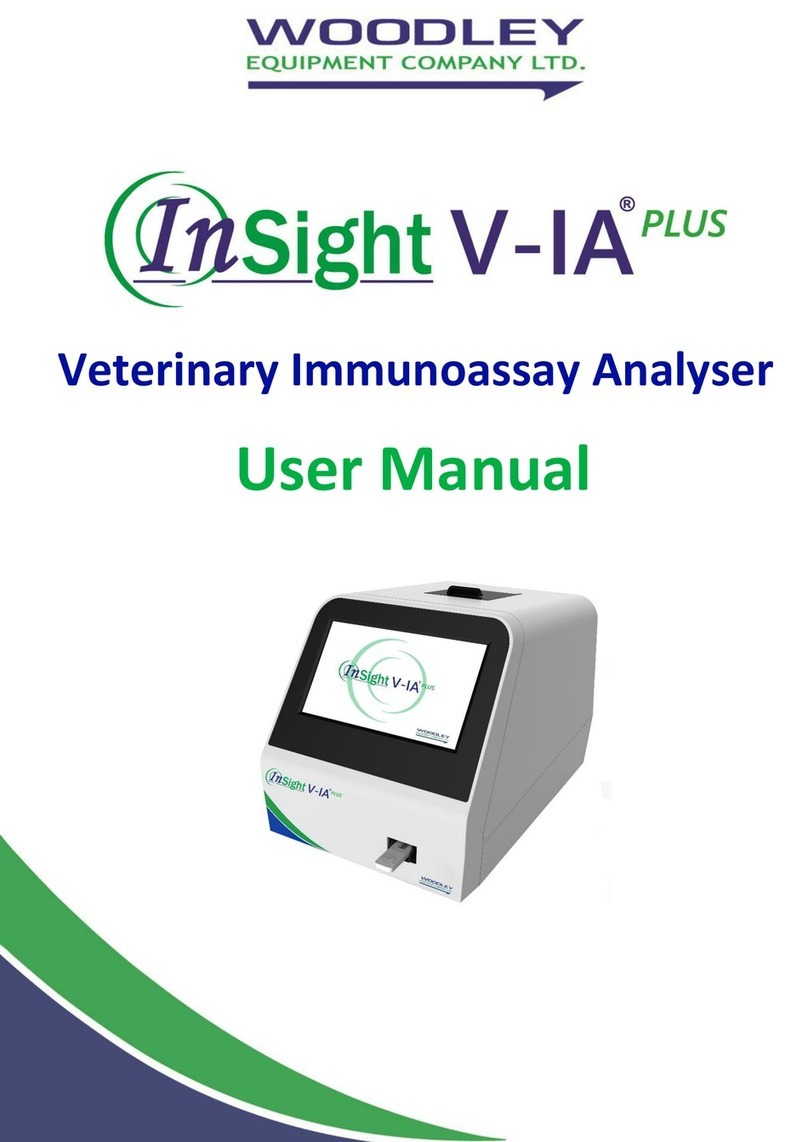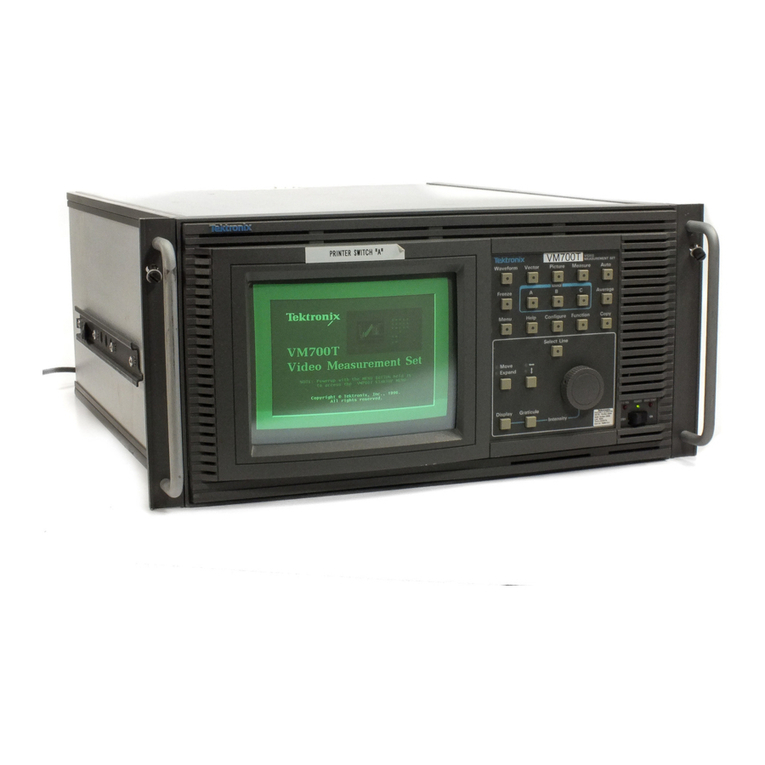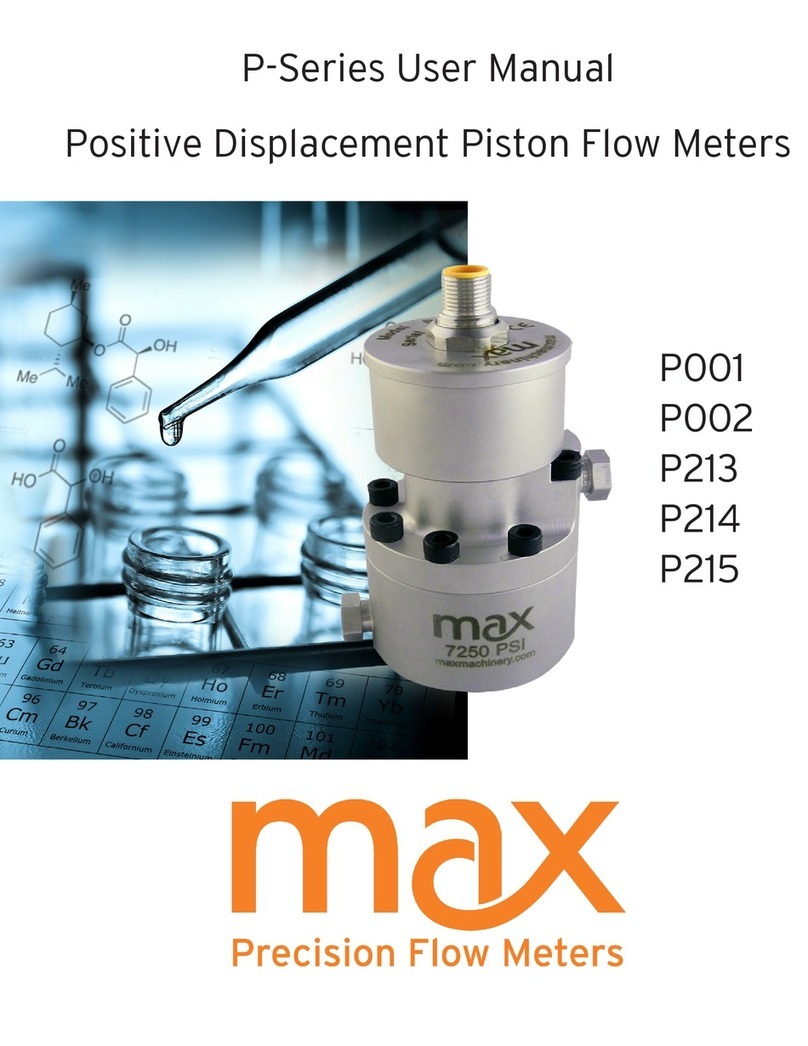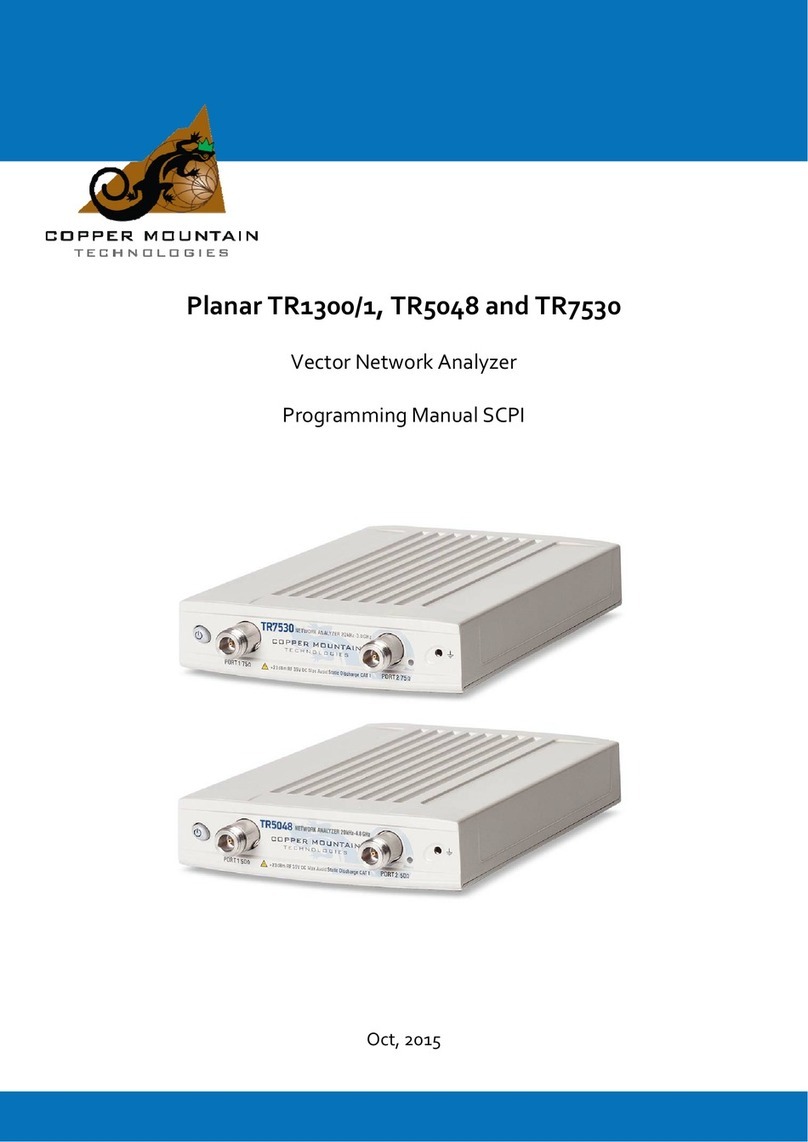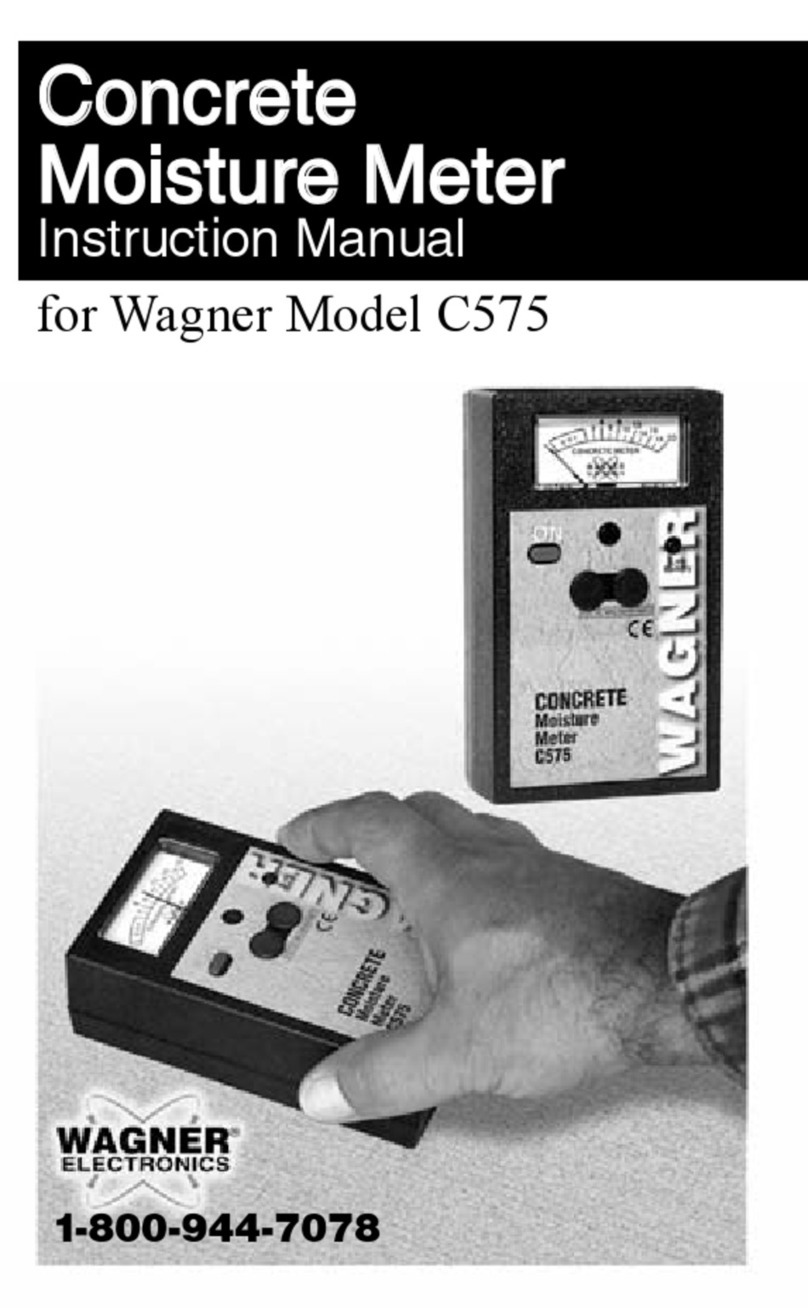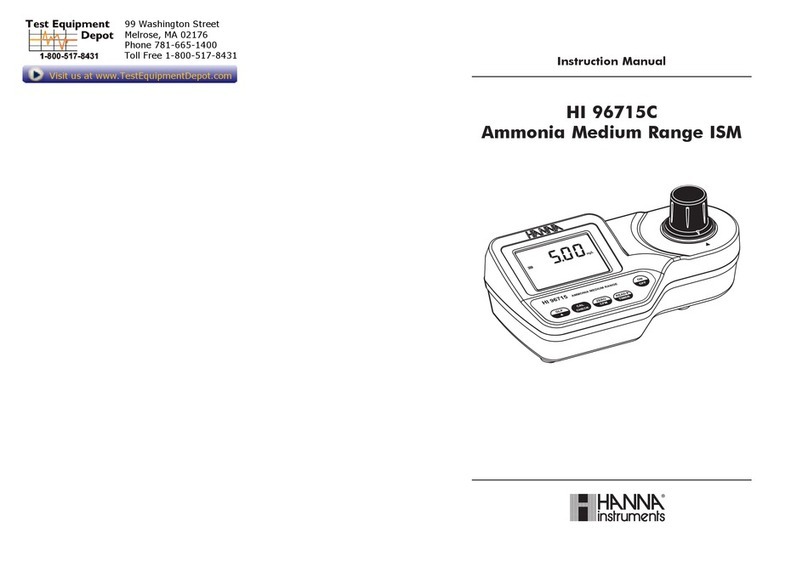TRIMOS V9 User manual

USER’S MANUAL
V7 / V9
750 50 0042 03


TRIMOS SA
Av. de Longemalle 5
CH - 1020 Renens
T. + 41 21 633 01 01
F. + 41 21 633 01 02
www.trimos.com
1
Dear customer, congratulations for choosing a TRIMOS measuring instrument. For more
than 40 years, our products have built up an excellent reputation in terms of quality, accuracy
and longevity. For full satisfaction with the present product, we recommend to read this
user’s manual carefully.
750 50 0042 03 Version 1.4 / 2018-04
Valid for firmware package 1.20/2.36/3.27
TRIMOS ® - All modification rights reserved

User's Manual
750 50 0042 03 2
CONTENTS
1. Safety Regulations.............................................................................................................. 5
1.1 Important Information ................................................................................................ 5
1.2 Security Symbols........................................................................................................ 5
1.3 General Warnings....................................................................................................... 5
2. Instrument Description ...................................................................................................... 6
2.1 V7................................................................................................................................ 6
2.2 V9................................................................................................................................ 8
3. Setting up .......................................................................................................................... 10
3.1 Packing List .............................................................................................................. 10
3.2 Setting-up................................................................................................................. 11
4. Getting Started.................................................................................................................. 13
4.1 Start-up..................................................................................................................... 13
4.2 Displacement Modes: Manual/Motorized............................................................... 13
4.3 Reference and Probe Constant ............................................................................... 15
5. Display structure............................................................................................................... 17
5.1 Display Modes ......................................................................................................... 17
5.2 Function Menus........................................................................................................ 17
6. Main Measurement Functions......................................................................................... 18
6.1 Height Measurements .............................................................................................. 18
6.2 Diameter and Centreline Measurement................................................................... 19
6.3 Min, Max and Delta Modes ..................................................................................... 21
7. Additional Functions......................................................................................................... 23
7.1 Zero Setting of the Display ...................................................................................... 23
7.2 References and Preset ............................................................................................. 23
7.3 Selection of the Measuring Unit .............................................................................. 24
7.4 Resolution ................................................................................................................. 25
7.5 Buffer Management.................................................................................................. 25
7.6 Probe Constant........................................................................................................ 27
7.7 Difference Between the Last 2 Measurements........................................................ 28
7.8 Operations Between Selected Values of the Buffer................................................ 28
7.9 Average of the Last 2 Measurements...................................................................... 30
7.10 Distance and Centreline Measurement ................................................................... 31
7.11 Angle (and cone) Measurements............................................................................. 32
7.12 Tolerance Limits ....................................................................................................... 34
7.13 Display Modes of the Height Measurements.......................................................... 35
7.14 Probe Holder Change .............................................................................................. 36
7.15 Shrinking Factor ....................................................................................................... 37
7.16 Inversion of the Measuring Direction....................................................................... 38
8. Perpendicularity Measurements..................................................................................... 39
8.1 With Test Indicator ................................................................................................... 39
8.2 With Electronic Probe............................................................................................... 39
9. 2-Coordinate Measurements (2D) .................................................................................. 44
9.1 Getting Started......................................................................................................... 44
9.2 Acquisition of Points ................................................................................................ 45
9.3 Display Management ............................................................................................... 46

V7 / V9
750 50 0042 03 3
9.4 Transformations of the Axis System ........................................................................ 47
9.5 Measurements and Analyses ................................................................................... 49
9.6 Editing, Adding and Deleting Points ........................................................................ 51
9.7 Quit the 2D mode..................................................................................................... 53
10. Measurement sequences ................................................................................................ 54
10.1 Start .......................................................................................................................... 54
10.2 Programming a Sequence........................................................................................ 55
10.3 Running a Sequence ................................................................................................ 57
10.4 Special Features of the Programming Mode........................................................... 58
10.5 Quit the Measurement Sequence Mode ................................................................. 58
11. Statistical Analysis of Results ......................................................................................... 59
11.1 Start .......................................................................................................................... 59
11.2 Batch Analysis .......................................................................................................... 59
11.3 Quit the Statistic Analysis Mode ............................................................................. 62
12. Sending Data and Printing .............................................................................................. 63
12.1 Connectors............................................................................................................... 63
12.2 Configuring the Printing and the Data Transfer....................................................... 63
12.3 Data Transfer via USB B........................................................................................... 64
12.4 Data Transfer via RS232........................................................................................... 65
12.5 Data Transfer to a USB Printer................................................................................. 66
13. Configuration .................................................................................................................... 68
13.1 Page 1....................................................................................................................... 68
13.2 Page 2....................................................................................................................... 68
13.3 Page 3....................................................................................................................... 69
13.4 Page 4....................................................................................................................... 69
13.5 Page 5....................................................................................................................... 70
13.6 Page 6....................................................................................................................... 70
14. Adjustments ...................................................................................................................... 71
14.1 Configuration diameter measurements "SMART REVERSE".................................... 71
14.2 Adjustment of Floating Probe Suspension Balancing ............................................. 72
14.3 Air Cushion ............................................................................................................... 73
14.4 Standby Mode.......................................................................................................... 73
14.5 Resetting of the Instrument...................................................................................... 73
14.6 Cleaning ................................................................................................................... 73
15. After Sales Service ........................................................................................................... 74
15.1 Replacement of Battery Block.................................................................................. 74
15.2 Replacement of Clock Back-up Battery................................................................... 74
15.3 Recycling of Electronic Components ...................................................................... 75
15.4 Complaints / Repairs................................................................................................ 75
15.5 Agents ...................................................................................................................... 75
16. Technical Specifications.................................................................................................. 76
16.1 V7.............................................................................................................................. 76
16.2 V9.............................................................................................................................. 78
17. Declaration of Conformity................................................................................................ 80

User's Manual
750 50 0042 03 4

V7 / V9
750 50 0042 03 5
1. SAFETY REGULATIONS
1.1 Important Information
In order to prevent any damages due to wrong manipulation, please carefully read the
following instructions. TRIMOS will not accept any responsibility in case of damages caused
by inadequate use not in line with the present manual.
1.2 Security Symbols
The following security symbols are used in this manual:
General warning, utilisation advice
Risk of electric shock
Electrostatic protection
1.3 General Warnings
Protection against electrostatic interferences:
Static electricity can damage the electronic components of the instrument. In
order to prevent this type of damages, avoid any contact with the connector pins.
In order to prevent any changes of the instrument performance or any accident,
the instrument should never be dismantled.
If, for any reason, the electronic unit has to be opened, only authorized personnel
are allowed to do so.
Do not expose the instrument, its components and accessories to rain or any
projection of fluids. Avoid penetration of foreign substances into the connectors
and the instrument openings.
Do not cover or wrap the display unit during use. The unit must be kept well
ventilated to avoid any overheating.
In case of problems with the instrument or any of its parts (no display,
overheating, abnormal smell...), immediately switch off the instrument and
disconnect the power supply. Please contact your local TRIMOS agent.
This is a high accuracy instrument. Particular care should be taken during its entire
operational lifetime. Pay special attention to the following specific points :
- Use the instrument on a stable, smooth and clean surface plate.
- Avoid any shock to prevent the instrument from losing some or all of its
performing characteristics.
- Use the instrument in a vibration free area.
- Avoid exposure to direct sunlight and excessive humidity.
- Avoid proximity of heating or air conditioning systems.
- Respect the advised environmental conditions.

User's Manual
750 50 0042 03 6
2. INSTRUMENT DESCRIPTION
2.1 V7
2.1.2
8
10
7
5
4
3
2
1
6
9
11
12
24
25
26
21
22
23
2.1.3
2.1.1
31
36
37
38
32
33
34
35

V7 / V9
750 50 0042 03 7
2.1.1 Instrument
1. Upper probe holder
2. Screw for the adjustment of the floating probe suspension
3. Handle for carriage displacement
4. Transport safety screw for locking of probe suspension (chromium plated)
5. Lower probe holder
6. Insert holder
7. Measuring insert
8. Operating handle for the displacement of the instrument
9. Button for activation of air cushion and programmable functions keys (§ 13.3)
10. Base with air cushion system for instrument displacement
11. Handwheel for carriage displacement / Activation of manual/motorised movement
12. Buttons for motorised displacement
2.1.2 Interfaces/Connectors
21. RJ45 connector
22. USB-A connectors (4x)
23. USB-B connector
24. Connector for electronic perpendicularity probe
25. Connector for RS232 communication (on lower right side of height gauge)
26. AC adapter connection (on lower right side of height gauge)
2.1.3 Display
31. Status symbols (battery level, units, active functions, date and time)
32. 1st display line
33. 2nd display line
34. Menu line with scrolling functions
35. Menu line with fixed functions
36. Current reference
37. Probing indicator
38. Selection tabs of the measurement display mode

User's Manual
750 50 0042 03 8
2.2 V9
7
9
5
4
3
2
1
6
8
10
11
24
25
26
21
22
23
2.2.3
2.2.2
2.2.1
31
36
37
38
32
33
34
35

V7 / V9
750 50 0042 03 9
2.2.1 Instrument
1. Upper probe holder
2. Lever for the adjustment of the floating probe suspension
3. Handle for carriage displacement
4. Transport safety screw for locking of probe suspension (chromium plated)
5. Lower probe holder
6. Measuring insert
7. Operating handle for the displacement of the instrument
8. Button for activation of air cushion and programmable functions keys (§ 13.3)
9. Base with air cushion system for instrument displacement
10. Handwheel for carriage displacement / Activation of manual/motorised movement
11. Buttons for motorised displacement
2.2.2 Interfaces/Connectors
21. RJ45 connector
22. USB-A connectors (4x)
23. USB-B connector
24. Connector for electronic perpendicularity probe
25. Connector for RS232 communication (on lower right side of height gauge)
26. AC adapter connection (on lower right side of height gauge)
2.2.3 Display
31. Status symbols (battery level, units, active functions, date and time)
32. 1st display line
33. 2nd display line
34. Menu line with scrolling functions
35. Menu line with fixed functions
36. Current reference
37. Probing indicator
38. Selection tabs of the measurement display mode

User's Manual
750 50 0042 03 10
3. SETTING UP
3.1 Packing List
The standard packing of the instrument includes the following elements:
V7 V9
1. Instrument with display unit and
connection cable (HDMI)
2. Measuring insert
3. Setting gauge
4. Charging unit
5. Protection cover
6. User's manual
7. Calibration certificate
While unpacking, carry the instrument by lifting if by its displacement handle and
body. In NO case should the instrument be carried by the handle for carriage
displacement (3). Keep the original packaging for future transportation.
If the instrument has been stored at a temperature below 5°C, wait a few hours
before unpacking to prevent the instrument parts from condensation.
Condensation can affect sensitive parts of the instrument.

V7 / V9
750 50 0042 03 11
3.2 Setting-up
After unpacking, prepare the instrument as follows:
1. Clean the pads positioned underneath the base
using a clean cloth, slightly dampened with alcohol.
2. Position the instrument with care on a clean
measuring plate.
3. Mount the display unit on its support using the 2
screws.
4. Connect the HDMI cable between the instrument
and the display unit.
The straight connector shall be connected to the display unit and the right-
angle connector to the instrument.
Static electricity can damage the electronic components of the instrument. In
order to prevent this type of damages, avoid any contact with the connector
pins.
5. The locking knob behind the support allows the
adjustment of the display unit position.

User's Manual
750 50 0042 03 12
6. Slide the measuring insert into the holder and lock
it, using the knob. Take care to position the
eccentric probes correctly.
7. Release the transport safety screw.
8. Check / adjust the floating probe suspension
balancing (§ 14.2).
9. If the instrument does not switch on or in case of
low battery level, proceed to a full loading of the
batteries (plug in the charging unit to the
instrument).
Only use the charging unit supplied with the instrument to load the batteries. Empty
batteries are fully loaded in about 12 hours. It is not necessary to wait until the
battery pack is fully charged. The instrument becomes operational immediately after
having connected the charging unit.
It is not dangerous to leave the charging unit connected. Permanently plugged-in
instruments automatically switch to trickle charge mode.
The batteries are of Lithium-ion type. An excessive room temperature can affect the
battery capacity and therefore the instrument autonomy. It is not recommended to
load the battery in case of room temperature superior to 40C°.
Incorrect loading of the battery can result in a decrease of capacity, overheating, or
even an explosion and cause important damages.
The battery can be loaded and unloaded 300 times before a significant reduction of
their capacity. The number of loading cycles and the autonomy can vary according
to use and operating conditions.
V7
V9
V7
V9

V7 / V9
750 50 0042 03 13
4. GETTING STARTED
4.1 Start-up
Switch on the instrument by pressing the On/Off button
for 2 seconds.
> 2s
4.2 Displacement Modes: Manual/Motorized
V7 & V9 instruments can be used in manual or motorized mode.
4.2.1 Manual Displacement Mode
The manual displacement of the carriage is carried out
with the help of the handle.
4.2.2 Motorized Displacement Mode
Pull the handle outwards to work in motorized mode. In
this mode, the rotating handle can be tucked inside for
ergonomic reasons.
When The motorisation is switched on, the "motor"
symbol is displayed on the top of the screen.
Activation of
motorised
mode
Activation of
manual
mode

User's Manual
750 50 0042 03 14
Motorised displacement is carried out with the help of 2
buttons placed behind the handwheel or in some cases
the touchscreen.
Rapid Displacement
A prolonged press on one of the buttons causes a rapid
movement in the chosen direction. The carriage will
continue its displacement as long as the pressure is
maintained.
Slow Displacement (Probing)
A short pressure causes a continuous displacement in
probing speed, i.e. speed used for measuring. As soon
as the probe gets in touch with a surface, a
measurement is made.
Release of Probe
When the probe is in contact with the part (after
probing), a short pressure on the button for the opposite
direction allows to release the probe (ca. 0.5 mm).
Movement Stop
While displacing in low speed mode, a short pressure on
the button for the same direction as that of the
displacement will stop the movement.
When the graphic display mode is selected, the
displacement is carried out with the help of 2 grey
arrows to the right of the screen.
Its usage is identical to the one described above in case
of buttons.
Button for upward
displacement
Button for downward
displacement

V7 / V9
750 50 0042 03 15
4.3 Reference and Probe Constant
1. After starting-
up, the display will ask for the reference
position. Move the measuring carriage slowly across
the mark indicating the reference position with the
help of the handle for carriage displacement (the
acquisition of reference is carried out by displacing
the carriage upwards). An acoustic signal will confirm
that the reference has been detected.
Note:
This procedure is carried out automatically in
motorised mode. Next, the measuring insert will
come and position itself at the upper level of the
setting gauge (see below).
2. The instrument is now asking for the probe constant.
This function compensates the dimension and the
bending of the measuring insert when probing
downwards and upwards (reversed surfaces,
diameters). The last stored probe constant value will
be displayed.
Note:
This procedure may be interrupted by pressing on the
constant recording button or on any other mode of
measurement button. The latest probe constant value
measured is then recorded.

User's Manual
750 50 0042 03 16
3.
Use the setting gauge supplied with the instrument to
carry out this operation.
Note:
A different setting gauge may be used. In this case,
its dimension must be configured in the set-up menu
(§ 13.2).
4. Move the measuring insert downwards (use the
handwheel for the displacement of the measuring
carriage) until it touches the surface and an acoustic
signal confirms the measurement (=probing).
5. Without moving any part (instrument and gauge),
move the measuring insert towards the top and
perform the same sequence on the upper surface of
the setting gauge.
6. Repeat the sequences 4 and 5 one more time. This
allows establishing the probe constant more
precisely.
2x
7.
The screen will display the setting gauge value during
the latest probing, as well as that of the new probe
constant. The instrument is then ready to be used.
In motorised mode, this procedure can be carried out
automatically by pressing one of the grey arrows on the
right of the screen.
The probe constant needs to be checked and stored again after each measuring
insert change, after change of its position in the holder, after each adjustment of
the measuring force or adjustment of the floating probe suspension.

V7 / V9
750 50 0042 03 17
5. DISPLAY STRUCTURE
The display has 4 main areas:
Status bar
Working parameters
Measured values
These show the units measured and the position of
the carriage
Display modes
These display the results history (buffer) or a
customised graphic help.
Function menus
Functions are placed in 2 rows in the lower part of
the screen.
5.1 Display Modes
By clicking on one of the tabs alongside, the user can
select between the following display modes:
Display the measurement history (buffer)
Graphic help to guide the user while taking
measurements.
Buffer
Graphic help
5.2 Function Menus
The lower functions menu line is the main line. It is static.
The upper function line is scrolling. A press on the
Logo
key scrolls the other function lines.
Function
menus
Display
modes
Measured
values
Status bar

User's Manual
750 50 0042 03 18
6. MAIN MEASUREMENT FUNCTIONS
6.1 Height Measurements
H1 = Height measurement downwards ( )
H2 = Height measurement upwards ( )
H12 = Chain dimensions
1. On starting-up, the instrument is in height
measurement mode. If the instrument is not in
this mode, select height measurement mode.
2. Set the display at zero or at a preset value with
the measuring insert probing a reference
surface (see § 7.1 and § 7.2).
3. Probe the surface to be measured downwards
or upwards. The probing indicator will display
the progression of the measuring force
application. When the right force is reached,
an acoustic signal will confirm the
measurement.
Note:
The first line of the display indicates the height
measured. The second line indicates the
distance from the former height measurement
(chain of dimensions).
H1
H2
H12
This manual suits for next models
1
Table of contents
Other TRIMOS Measuring Instrument manuals
Popular Measuring Instrument manuals by other brands

TESTO
TESTO 0555 6451 operating instructions

CONDTROL
CONDTROL xMarker user manual
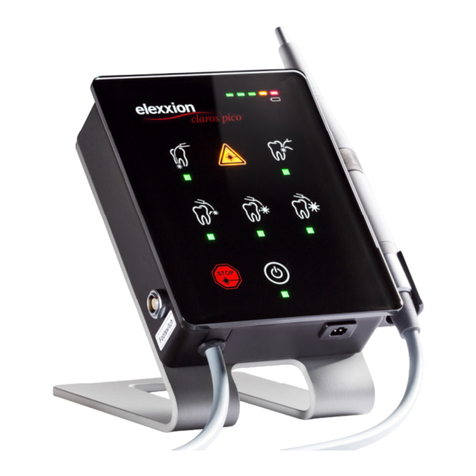
elexxion
elexxion claros pico user manual
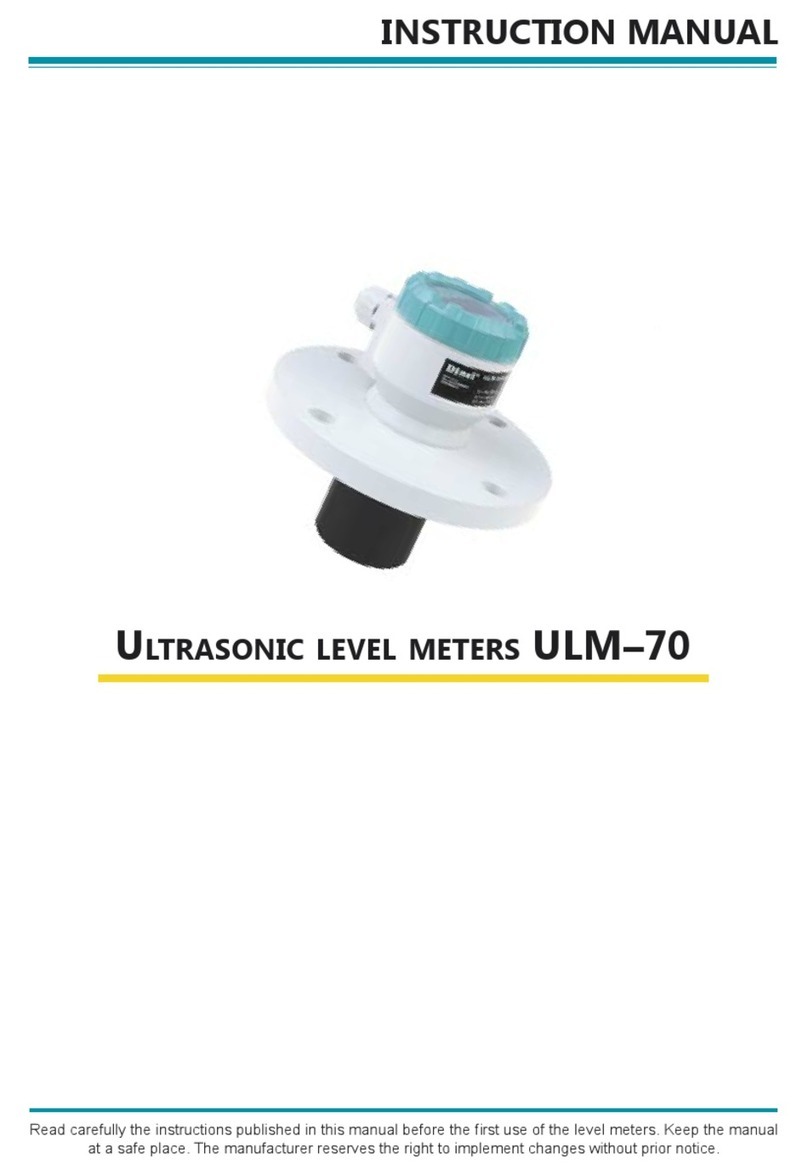
Dinel
Dinel ULM -70 Series instruction manual
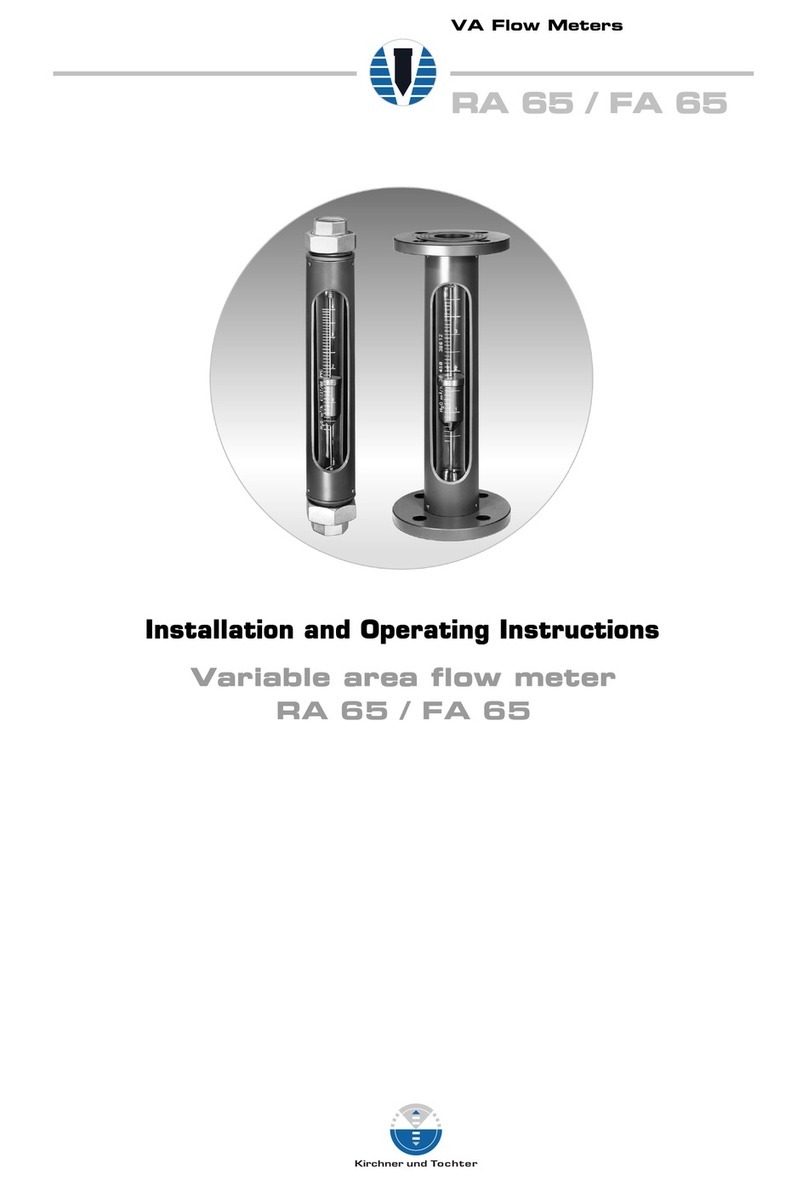
Kirchner und Tochter
Kirchner und Tochter RA 65 Installation and operating instructions
Onicon
Onicon System-10 BTU Meter Installation and operation guide
